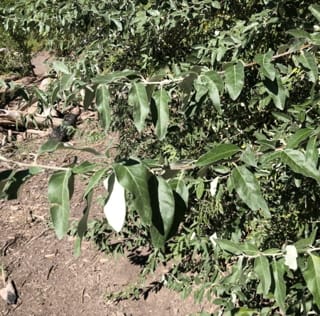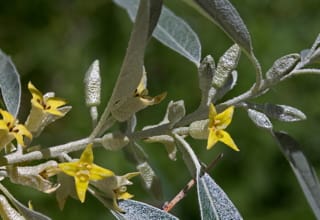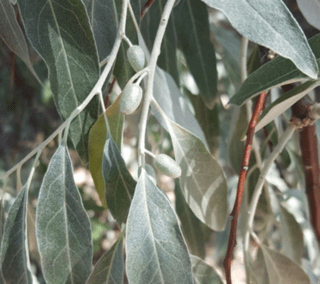This guide initially displays all weeds in the Los Alamos area classified in NM as noxious regardless of shape. Use the selectors below to include nonclassified weeds or select a specific set, either by shape or name.
The term weed is commonly used to denote a plant that is growing in an area where it is not valued. It is officially defined by the USDA Animal and Plant Health Inspection Service as being any plant that poses a threat to agriculture and/or a natural ecosystem. A noxious weed is one that is particularly troublesome and can directly or indirectly injure or cause damage to crops, livestock, or natural resources.
In general, plants that are within their native range live in balance with their environment and are not typically considered to be weeds. Issues can occur, however, if a plant is introduced, either directly or indirectly, to a new ecosystem. These, now non-native plants, may be able to thrive in their new environment. If so, these naturalized plants can fall into one or two categories long term: (1) plants that are valued for their flowers and fruit and (2) plants that are rapidly considered to be weeds. The plants in the latter category are those that are generally regarded as noxious weeds.
While some species shown here are included in the PEEC Flower and Tree Guides, this guide concentrates on some of the nastier introduced species that you might see in your yard or on local trails. In addition, this guide includes some native plants that meet the general definition of weed.
Weed References
A Plan For the Control of Invasive Species on Los Alamos County Open Space — Craig Martin [PDF]
Los Alamos Master Garden Weed List
NMSU Weed Information
SEINet: Southwest Biodiversity
Some Common Lawn and Garden Weeds of Los Alamos, NM — Dorothy Hoard and Teralene Foxx [PDF]
Troublesome Weeds of NM
USDA: Introduced, Invasive, and Noxious Plants
Weed Alert
Weeds of the Los Alamos Area — Teralene Foxx [PDF]
Subject Area Experts (all guides)
Steve Cary (butterflies)
Beth Cortright (insects)
Terry Foxx (invasive plants)
Leslie Hansen (mammals)
Richard Hansen (fish, mammals)
Dorothy Hoard (butterflies, trees)
Chick Keller (flowers, herbarium)
Shari Kelley (geology)
Kirt Kempter (geology)
Garth Tietjen (reptiles)
David Yeamans (birds)
Web Development and Content Management
Pat Bacha
Jennifer Macke
Graham Mark
Akkana Peck
Contact
Please contact us for local nature questions and sightings. We welcome comments, corrections, and additions to our guides.
For more information about local nature, please visit our Nature Blog or subscribe to PEEC This Week.
Make Selection
 Photo: datkin  Photo: Craig Martin  Photo: Alex Abair |  Russian Olive, Russian SilverberryELAN (Elaeagnus angustifolia)Family: Elaeagnaceae (Oleasters) Size: 180 - 276 in (457 - 701 cm) Growth: shrub, tree; perennial Status: non-native; classified weed (common) Native Range: Eurasia NM Noxious Weed Class: C - widespread Habitat: canyon, disturbed soil, grassland, riparian, and scrubland Control Notes: mow saplings; use cut stump method for mature trees — cut as low as possible, apply high-strength vinegar or herbicide The Russian Olive was imported into North America by the late 19th century. It is a fast-growing, resilient and drought-tolerant plant that could bed used to prevent erosion and provide wind-resistant hedges. Unfortunately, these same properties, lead to uncontrolled spreading and overcrowding of native vegetation. The plant is now listed on noxious weed lists in many parts of the US and Canada. In fact, in some areas, it is even mandatory to cut down and remove existing plants. Elaeagnus angustifolia is similar in appearance to a true olive Olea europaea but not related. It looks like a thorny shrub or small tree. Stems, buds and leaves have a dense covering of silvery-to-rusty scales. Young branches are whitish, while the older branches are brown-to-black and tend to have thorns. Leaves are oblong with silver scales on both sides. Flowers are fragrant with silver on the outside and yellow within. There are usually one to three flowers grouped together. Each oblong fruit which is like a berry contains one seed and is covered by silver scales. Russian Olives are grown in parts of their native range as an ornamental shrub. The flowers attract honey bees and the fruits are eaten by birds and other small animals. The fruits taste sweet but are usually dry and mealy. Lastly, the Russian Olive “olives” have been harvested for their oil since ancient times. Info Photos Distribution Tree Guide |
